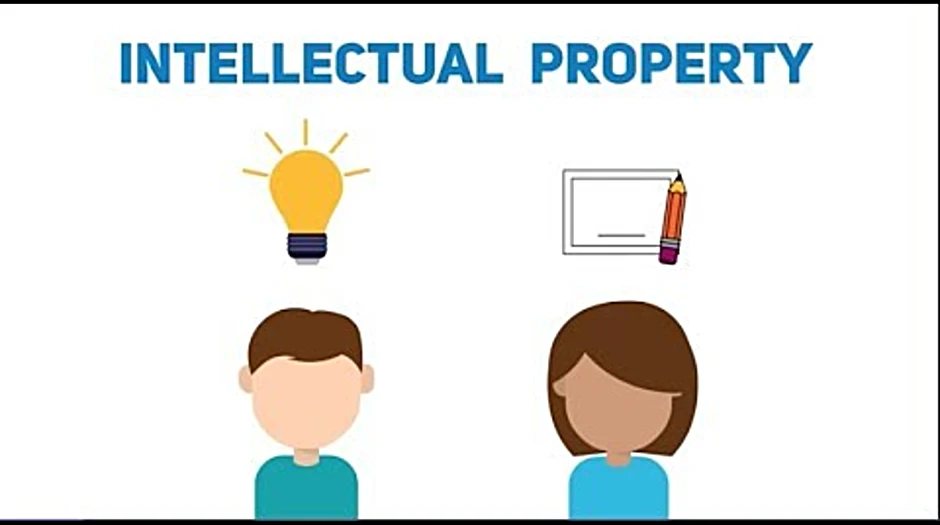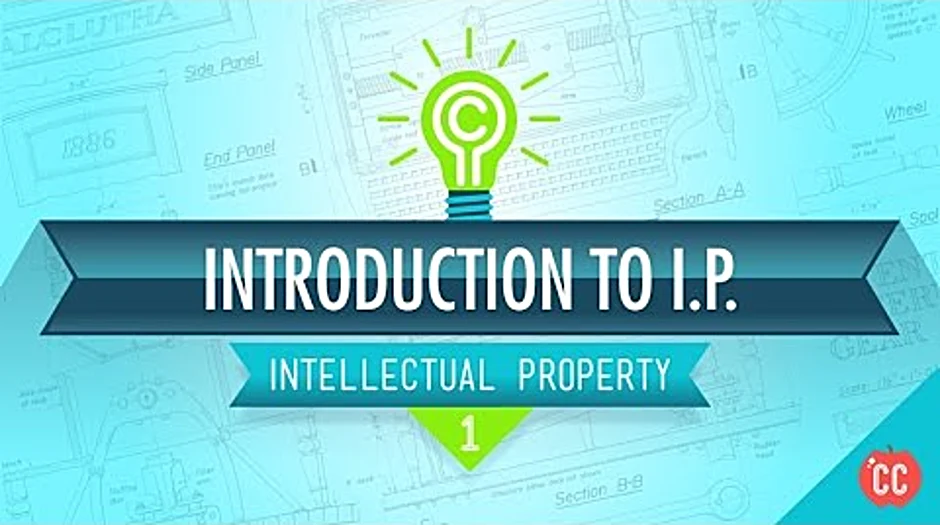What is intellectual property rights [Pictures]
Table of Contents
- What is intellectual property in simple words?
- What is the difference between intellectual property and copyright?
- What are the main types of intellectual property rights?
- What are the types of IP laws?
- What are intellectual property rights explain any two?
- What is the most important intellectual property?
- Why is it important to protect IP?
- Is intellectual property personal property?
- How long do intellectual property rights last?
- Can intellectual property be shared?
- What is stealing intellectual property?
- What is intellectual property give examples?
- What are the five types of intellectual property?
- What are the 4 types of intellectual property?
- What are the 7 intellectual property rights?
- Why is intellectual property rights important?
- What is intellectual property used for?
- Who owns intellectual property?
- What is intellectual property and types?
- How do you protect intellectual property?
Last updated : Aug 4, 2022
Written by : Melany Rochlin |
Current |
Write a comment |
What is intellectual property in simple words?
What is intellectual property? Intellectual property refers to any intellectual creation, such as literary works, artistic works, inventions, designs, symbols, names, images, computer code, etc. Intellectual property law exists in order to protect the creators and covers areas of copyright, trademark law, and patents.
What is intellectual property give examples?
Your intellectual property includes the intangible assets you create for your business, such as names, designs, and automated processes. And just like tangible possessions -- like supplies, equipment, buildings, and inventory --, your intellectual property contributes to the value and success of your business.
What are the 4 types of intellectual property?
Patents, trademarks, copyrights, and trade secrets are valuable assets of the company and understanding how they work and how they are created is critical to knowing how to protect them.
What are the 7 intellectual property rights?
Rights. Intellectual property rights include patents, copyright, industrial design rights, trademarks, plant variety rights, trade dress, geographical indications, and in some jurisdictions trade secrets.
Why is intellectual property rights important?
Why is IPR Important? Intellectual property protection is critical to fostering innovation. Without protection of ideas, businesses and individuals would not reap the full benefits of their inventions and would focus less on research and development.
What is intellectual property used for?
Intellectual property rights are legal rights that provide creators protection for original works, inventions, or the appearance of products, artistic works, scientific developments, and so on. Basically speaking, intellectual property rights are a common type of legal IP protection for those who invent.
Who owns intellectual property?
Generally, the creator of a work is deemed its owner. However, intellectual property ownership can be determined differently for different types of property and under varying circumstances. For example, if work is created for an employer, the employer is the owner of that intellectual property.
What is intellectual property and types?
Intellectual property (IP) refers to creations of the mind, such as inventions; literary and artistic works; designs; and symbols, names and images used in commerce.
How do you protect intellectual property?
- Keep Business Ideas and Trade Secrets a Secret.
- Document Your Concepts and Original Content in Detail.
- Apply for a Trademark.
- Register All Your IP, Trade Secrets, and Creative Works.
- Make the Investment.
What is the difference between intellectual property and copyright?
The terms “copyright†and “intellectual property†are often used interchangeably. However, copyright is just a part of the scope of intellectual property, as are trade marks, patents, and designs. Intellectual property (IP) describes a form of property which is the intangible output of the human creative mind.
What are the main types of intellectual property rights?
There are four main types of intellectual property rights, including patents, trademarks, copyrights, and trade secrets.
What are the types of IP laws?
Intellectual Property is traditionally divided into two categories: (i) Industrial Property which includes patents for inventions, trademarks and service marks, industrial designs and Geographical Indications and (ii) Copyright which covers literary and artistic works.
What are intellectual property rights explain any two?
Intellectual Property Rights (IPRs) are legal rights that protect creations and/or inventions resulting from intellectual activity in the industrial, scientific, literary or artistic fields. The most common IPRs include patents, copyrights, marks and trade secrets.
What is the most important intellectual property?
Patent: Patents protect inventions. They give the patent holder the right to exclude others from making, using, marketing, selling, offering for sale, or importing an invention for a specified period.
Why is it important to protect IP?
Your IP rights are important because they can: set your business apart from competitors. be sold or licensed, providing an important revenue stream. offer customers something new and different.
Is intellectual property personal property?
Intellectual property is one of the most common forms of intangible personal property. Some examples of intangible personal property include image, social, and reputational capital, as well as personal social media pages and other personal digital assets.
How long do intellectual property rights last?
In general, the term of copyright is the life of the author plus 70 years after the author's death (or last surviving author's death if a joint work). For works made for hire and anonymous or pseudonymous works, the duration of copyright is 95 years from publication or 120 years from creation, whichever is shorter.
Can intellectual property be shared?
Owners of shared intellectual property agree to share patent rights with both each other and third parties. Alliances, patent pools, and other organizations may choose this route for many reasons, such as finding ways to work around overlapping intellectual property rights.
What is stealing intellectual property?
Intellectual property theft is one someone steals an idea, creative expression, or invention from an individual or a company. IP theft can refer to someone stealing patents, copyrights, trademarks, or trade secrets. This includes names, logos, symbols, inventions, client lists, and more.
What are the five types of intellectual property?
- Copyright. Copyright protects creative works like computer code, photographs, artwork, and text.
- Moral Rights. Moral rights are related to copyright.
- Trademarks. Trademarks offer protection for your branding.
- Patents. A patent stops others from making your invention.
- Trade Secrets.

Check these related keywords for more interesting articles :
Does bmi copyright your music
How to check trademark availability in us
How to file for patent in us
How to check brand name availability in uae
Can you copy a copyrighted book
How to protect books in your bag
How to know if trademark is approved
How to start a sweatshirt brand
Can you trademark a painting
How to patent a name for a company
Is it copyrighted or copywritten
Trademark law research paper
Trademark should be distinctive
When can you file for trademark
Trademark law united states
Did you find this article relevant to what you were looking for?
Write a comment
Comment by Nadia Tonnesen
Thanks for this great article
Thanks for your comment Nadia Tonnesen, have a nice day.
- Melany Rochlin, Staff Member
Comment by Tommy
intellectual property or IP refers to something a person has either thought of or created some examples of IP include designs processes songs logos discoveries symbols and even brand-new varieties of plants IP belongs to the person who thought it up or put the work into creating it they get to decide who makes it how and where it's used and who can sell and profit from it but how can thinkers and creators keep their IP safe from misuse by others after all in a digital world it's easy to copy an idea or a design luckily there are laws in place to protect IP once a person is ready to go public with it there are four major paths to legal protection applying for a patent patents cover things like inventions new processes new machines and new ways of manufacturing things applying for a copyright copyrights protect works like art music writings movies and even software using a trademark to cover unique branding and identifiers like business names logos slogans mascots and more keeping something secret trade secrets make sure that things like manufacturing processes formulas and compilations of information never make it into the wrong hands getting these protections in place may seem difficult or time-consuming at first but protecting yourself is well worth the time and effort and it's not as hard as you may think this is where technology transfer or t2 comes in t2 helps negotiate the use sharing and assigning of IP so that companies and individuals can use government technology or a joint project between the government and private sector can take place t2 can make it easy to license a patent or share confidential information so both parties can help each other solve problems or create new products you
Thanks Tommy your participation is very much appreciated
- Melany Rochlin
About the author

Melany Rochlin
I've studied finite geometry at Southeastern Oklahoma State University in Durant and I am an expert in playwrighting. I usually feel awake. My previous job was psychiatrist (md) I held this position for 10 years, I love talking about railway studies and nft���s. Huge fan of Kai Knapp I practice wrestling: freestyle and collect crater critters.
Try Not to laugh !
Joke resides here...
Tags
What is the difference between intellectual property and copyright
What are the main types of intellectual property rights
What are the types of IP laws
What are intellectual property rights explain any two
What is the most important intellectual property
Why is it important to protect IP
Is intellectual property personal property
How long do intellectual property rights last
Can intellectual property be shared
What is stealing intellectual property
What is intellectual property give examples
What are the five types of intellectual property
What are the 4 types of intellectual property
What are the 7 intellectual property rights
Why is intellectual property rights important
What is intellectual property used for
Who owns intellectual property
What is intellectual property and types
How do you protect intellectual property
 : 3713
: 3713

